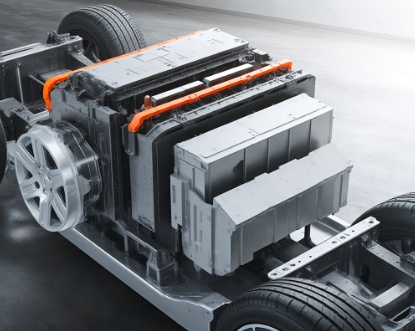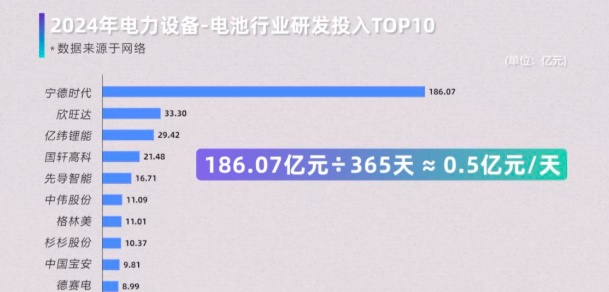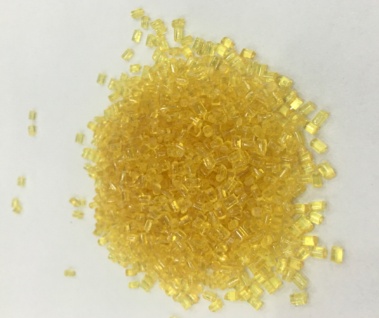The most expensive component in new energy vehicles: Why Power Batteries Are So Critical? Analysis of Plastics Material Application
In the cost structure of new energy vehicles, the power battery is the most critical component, with its cost typically accounting for a significant proportion of the total vehicle cost.The proportion of over 30% not only reflects the core position of power batteries in new energy vehicles but also illustrates the dual characteristics of their technical complexity and material costs.
As a vertical platform in the plastics industry, Specialized Plastics World will analyze the value of power batteries, the development of China's industrial chain, the application of key materials, and future technology directions. It will explore why power batteries have become the most expensive component in new energy vehicles and analyze how the plastics involved play a role.

The image is AI-generated.
Power Battery: The Core of New Energy Vehicle Performance and Cost
The value of power batteries goes far beyond their cost proportion; as the core of energy storage and conversion, they directly determine the range, safety, and user experience of new energy vehicles.
Early electric vehicles had a limited range of just a few dozen kilometers due to low battery energy density, making them insufficient for daily needs. With technological advancements, the energy density of power batteries has increased from less than...Increasing from 100Wh/kg to over 300Wh/kg, mainstream models have a range exceeding 400 kilometers, while some high-end models even surpass 1000 kilometers. This is what truly enables electric vehicles to have the potential to replace gasoline vehicles.
Safety is another key indicator for power batteries. Thermal runaway of batteries has been a major cause of spontaneous combustion in new energy vehicles. To address this, the industry has made advancements through material innovations (such as high-nickel ternary cathodes and silicon-based anodes) and structural optimizations (such as...CTP technology balances energy density and thermal stability. For example, BYD's "blade battery" achieves safety performance by preventing single cell thermal runaway from spreading through improved cell structure combined with ceramic thermal pads and a honeycomb design.
Charging efficiency also affects user experience. From the early stages ofFrom the 400V platform to today's 800V and 1000V high-voltage platforms, charging power has increased from 60kW to 350kW. Some models have already achieved "charging for 5 minutes, range of 200 kilometers." This breakthrough relies on the synergistic evolution of battery materials (such as high-conductivity cathodes and thinner separators) and thermal management technologies. For example, Tesla's 4680 battery employs thermal conductive adhesive and liquid cooling structures, which have improved thermal management efficiency by 30%.
China's Power Battery Industry: From Catching Up to Global Leadership
Chinese companies dominate the global power battery market.In 2025, the global market share of power batteries exceeds 68%, with CATL and BYD ranking first and second, respectively, accounting for a combined share of 55.7%. This achievement is attributed to multiple factors:
CATL fromFounded in 2011, the company has focused on the fields of power batteries and energy storage batteries, rejecting the temptation to manufacture cars. It has built technical barriers through a full-chain R&D approach from "materials-manufacturing-application." Its R&D investment in 2024 reached 18.6 billion yuan, with over 43,000 patents. This long-term commitment has laid the foundation for its technological leadership.

Source of the image: Tong Jiren Automobile Research
The automotive-grade sodium-ion battery launched by CATL has an energy density.The battery has an energy density of 175Wh/kg and can maintain 90% of its charge at minus 40°C, with carbon emissions 60% lower than lithium batteries, effectively alleviating the dependency on lithium resources. In addition, its second-generation Shenxing ultra-fast charging battery supports a 12C peak charge (1.3 megawatts), allowing for 80% recharge in 10 minutes, showcasing a breakthrough in fast-charging technology. The dual-core battery technology, through "lithium + sodium" and "lithium + lithium" combinations, balances cost and performance, supporting a 500-kilometer range and 5C fast charging.
As Chinese power battery companies deeply integrate upstream materials (cathode, anode, electrolyte) and downstream car manufacturers through large-scale production (such as CATL globally.For example, BYD has achieved cost reduction through vertical integration, implementing full process control from cell to battery pack, thereby further enhancing its cost advantage.
Plastics in Power Batteries: Functions and Applications
The demand for lightweight, sealing, and safety in power batteries has driven the widespread application of high-performance plastic materials. Although these materials do not directly participate in electrochemical reactions, they play a key role in the reliability and durability of the batteries.
Sealing elementEnsuring battery safety is fundamental, for example,PPS (polyphenylene sulfide) sealing rings can withstand high temperatures of 220-240℃ for extended periods, resist electrolyte corrosion without deformation, and are widely used in battery module sealing to ensure a stable internal environment.
Insulation materialUsed to prevent thermal runaway propagation in battery cells. Aerogel composite film, polyimidePI) Foam and other materials, due to their low thermal conductivity (as low as 0.012W/(m·K) for aerogels) and high temperature resistance (capable of withstanding up to 1200°C), have become the main choices for thermal insulation between battery cells. BYD's "blade battery" employs ceramic insulation pads and a honeycomb structure to prevent the spread of thermal runaway in individual cells, which is a typical example of the application of thermal insulation materials.
Structural support components represented by battery packsResponsible for fixing the position of the cell and bearing vibrations and impacts. Modification.PPO (polyphenylene oxide) and PC/ABS (polycarbonate/acrylonitrile-butadiene-styrene) materials combine strength and toughness. PPO is resistant to high temperatures up to 130°C, while PC/ABS is suitable for thin-walled part molding. CATL's CTP technology enhances volume utilization by 20% by reducing module structures and directly integrating battery cells with polymer supports, exemplifying the optimization of structural support materials.
Electrical insulating materialsIn high-pressure environments (For voltages above 800V, it is crucial. Materials such as PPS and PEI (Polyetherimide) are resistant to electric arcs and tracking, ensuring insulation performance. For example, Huawei's AI fast-charging system uses PEI insulation sheets that can withstand 3000V, with a thickness of only 0.2mm, meeting the insulation requirements of high-voltage fast charging.

PEI, image source: Baidu Encyclopedia
Thermal management materialsThermal conductive silicone, phase change materialsPCM (Phase Change Material), etc., are used for efficient heat dissipation and temperature uniformity. Thermal conductive silicone fills the gap between the battery cell and the liquid cooling plate, with a thermal conductivity of 1-5 W/(m·K); the phase change material absorbs heat and melts at 45°C to control temperature rise. Tesla's 4680 battery adopts a structure of thermal conductive adhesive combined with liquid cooling, improving thermal management efficiency by 30%, which is precisely the result of the synergistic effect of thermal management materials.
Packaging and protective materials such as aluminum-plastic film(NylonAluminum foil/PP composite), V0 grade flame-retardant PC, used for pouch cell packaging and hard shell battery casing protection. The thickness of Funeng Technology's pouch cell aluminum-plastic film is 152μm, with a puncture strength of >30N and resistance to electrolyte corrosion for 1000 hours, reflecting a breakthrough in protective performance.
Future Technology Direction: Material Innovation Drives Performance Upgrades
Despite significant advancements in power battery technology, the industry is still exploring more efficient and safer solutions.
Solid-state batteryIt is an important direction for the future, and its sulfides...Polymer solid-state electrolytes have achieved an ionic conductivity of 10^-3 S/cm with an energy density target of 500 Wh/kg. Although mass production may take another 3-5 years, it is expected to completely solve the thermal runaway risk of liquid batteries.
Sodium-ion batteryDue to abundant resources and low cost (lower than lithium batteries)In 2025, CATL will launch a new sodium battery with an energy density of 175Wh/kg, stable performance at -40°C, which will be first applied in commercial vehicles and energy storage fields to alleviate the pressure on lithium resources.
In the production of power batteries,AI-empowered materials research and developmentAccelerate the development of cathodes (such as lithium-rich manganese-based), anodes (such as hard carbon), and electrolytes (such as ionic liquids) through high-throughput computation and machine learning, thereby shortening the cycle from laboratory to mass production for new materials.
In terms of circular economy,Battery recycling (nickel, cobalt, lithium) and secondary utilization (energy storage) become new growth points.CATLThe "battery swapping + recycling" model has covered 100,000 vehicles, achieving efficient resource utilization.
Power batteries as for new energy vehicles"The 'heart' is valuable not only because of its cost proportion but also as a platform for technological integration, driving the cross-disciplinary fusion of material science, manufacturing processes, and energy management. The leading position of Chinese enterprises in the global industrial chain is attributed to continuous investment in technological depth and rapid response to market demands."
【Copyright and Disclaimer】The above information is collected and organized by PlastMatch. The copyright belongs to the original author. This article is reprinted for the purpose of providing more information, and it does not imply that PlastMatch endorses the views expressed in the article or guarantees its accuracy. If there are any errors in the source attribution or if your legitimate rights have been infringed, please contact us, and we will promptly correct or remove the content. If other media, websites, or individuals use the aforementioned content, they must clearly indicate the original source and origin of the work and assume legal responsibility on their own.
Most Popular
-

List Released! Mexico Announces 50% Tariff On 1,371 China Product Categories
-

EU Changes ELV Regulation Again: Recycled Plastic Content Dispute and Exclusion of Bio-Based Plastics
-

Clariant Unveils Cost-Cutting Plan Details, Plans to Shut Down Multiple Plants
-

Mexico officially imposes tariffs on 1,400 chinese products, with rates up to 50%
-

Nissan Cuts Production of New Leaf EV in Half Due to Battery Shortage






